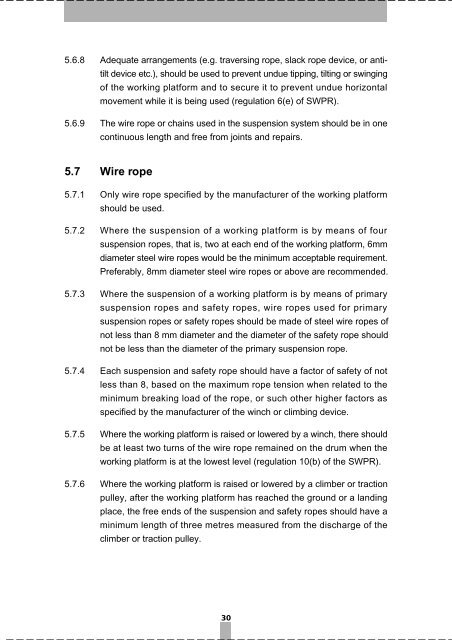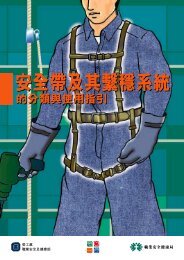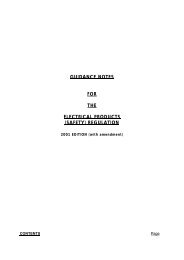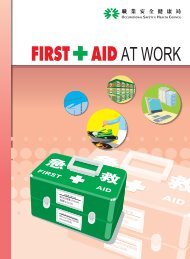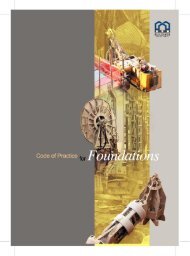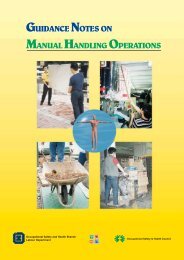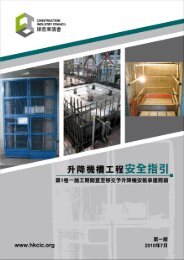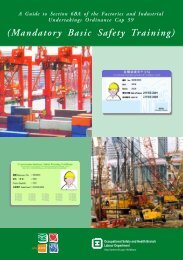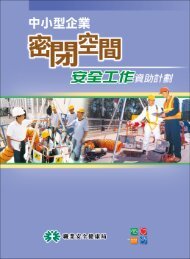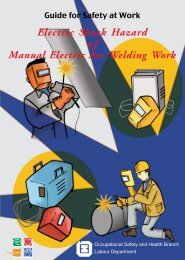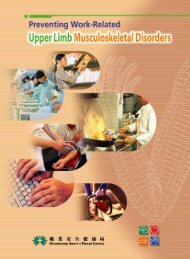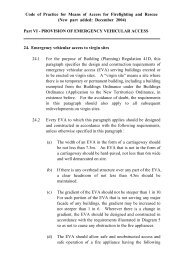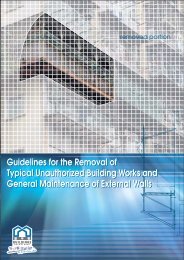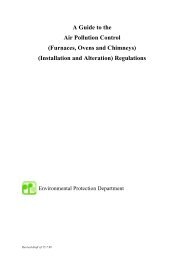Code of Practice for Safe Use and Operation of Suspended Working ...
Code of Practice for Safe Use and Operation of Suspended Working ...
Code of Practice for Safe Use and Operation of Suspended Working ...
- No tags were found...
Create successful ePaper yourself
Turn your PDF publications into a flip-book with our unique Google optimized e-Paper software.
5.6.8 Adequate arrangements (e.g. traversing rope, slack rope device, or antitiltdevice etc.), should be used to prevent undue tipping, tilting or swinging<strong>of</strong> the working plat<strong>for</strong>m <strong>and</strong> to secure it to prevent undue horizontalmovement while it is being used (regulation 6(e) <strong>of</strong> SWPR).5.6.9 The wire rope or chains used in the suspension system should be in onecontinuous length <strong>and</strong> free from joints <strong>and</strong> repairs.5.7 Wire rope5.7.1 Only wire rope specified by the manufacturer <strong>of</strong> the working plat<strong>for</strong>mshould be used.5.7.2 Where the suspension <strong>of</strong> a working plat<strong>for</strong>m is by means <strong>of</strong> foursuspension ropes, that is, two at each end <strong>of</strong> the working plat<strong>for</strong>m, 6mmdiameter steel wire ropes would be the minimum acceptable requirement.Preferably, 8mm diameter steel wire ropes or above are recommended.5.7.3 Where the suspension <strong>of</strong> a working plat<strong>for</strong>m is by means <strong>of</strong> primarysuspension ropes <strong>and</strong> safety ropes, wire ropes used <strong>for</strong> primarysuspension ropes or safety ropes should be made <strong>of</strong> steel wire ropes <strong>of</strong>not less than 8 mm diameter <strong>and</strong> the diameter <strong>of</strong> the safety rope shouldnot be less than the diameter <strong>of</strong> the primary suspension rope.5.7.4 Each suspension <strong>and</strong> safety rope should have a factor <strong>of</strong> safety <strong>of</strong> notless than 8, based on the maximum rope tension when related to theminimum breaking load <strong>of</strong> the rope, or such other higher factors asspecified by the manufacturer <strong>of</strong> the winch or climbing device.5.7.5 Where the working plat<strong>for</strong>m is raised or lowered by a winch, there shouldbe at least two turns <strong>of</strong> the wire rope remained on the drum when theworking plat<strong>for</strong>m is at the lowest level (regulation 10(b) <strong>of</strong> the SWPR).5.7.6 Where the working plat<strong>for</strong>m is raised or lowered by a climber or tractionpulley, after the working plat<strong>for</strong>m has reached the ground or a l<strong>and</strong>ingplace, the free ends <strong>of</strong> the suspension <strong>and</strong> safety ropes should have aminimum length <strong>of</strong> three metres measured from the discharge <strong>of</strong> theclimber or traction pulley.30


